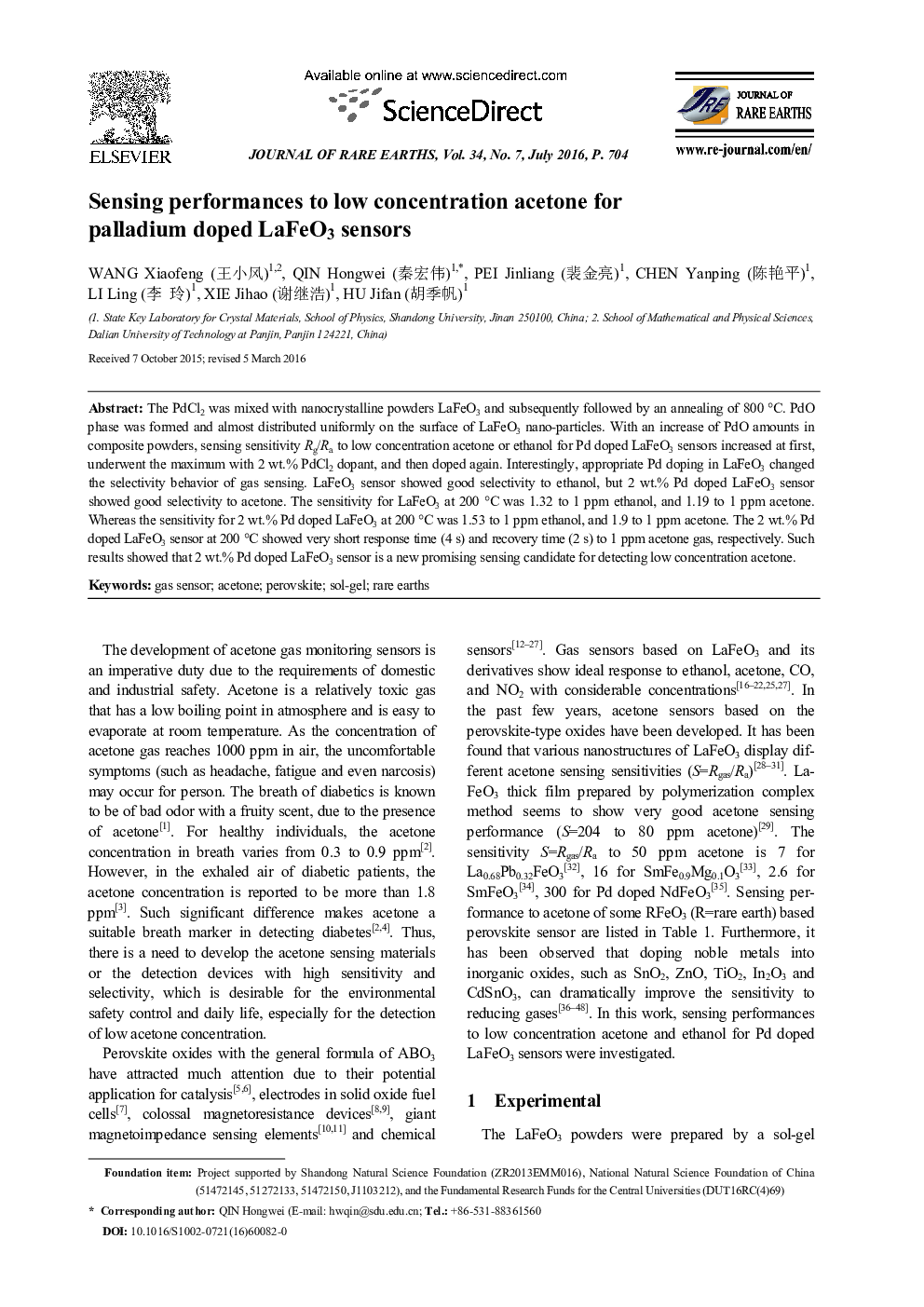| Article ID | Journal | Published Year | Pages | File Type |
|---|---|---|---|---|
| 1258228 | Journal of Rare Earths | 2016 | 7 Pages |
The PdCl2 was mixed with nanocrystalline powders LaFeO3 and subsequently followed by an annealing of 800 °C. PdO phase was formed and almost distributed uniformly on the surface of LaFeO3 nano-particles. With an increase of PdO amounts in composite powders, sensing sensitivity Rg/Ra to low concentration acetone or ethanol for Pd doped LaFeO3 sensors increased at first, underwent the maximum with 2 wt.% PdCl2 dopant, and then doped again. Interestingly, appropriate Pd doping in LaFeO3 changed the selectivity behavior of gas sensing. LaFeO3 sensor showed good selectivity to ethanol, but 2 wt.% Pd doped LaFeO3 sensor showed good selectivity to acetone. The sensitivity for LaFeO3 at 200 °C was 1.32 to 1 ppm ethanol, and 1.19 to 1 ppm acetone. Whereas the sensitivity for 2 wt.% Pd doped LaFeO3 at 200 °C was 1.53 to 1 ppm ethanol, and 1.9 to 1 ppm acetone. The 2 wt.% Pd doped LaFeO3 sensor at 200 °C showed very short response time (4 s) and recovery time (2 s) to 1 ppm acetone gas, respectively. Such results showed that 2 wt.% Pd doped LaFeO3 sensor is a new promising sensing candidate for detecting low concentration acetone.
Graphical AbstractTemperature dependence of the sensitivity to 1 ppm acetone gas for samples LaFeO3 with different Pd doping contents (a), and the Pd concentration dependence of the sensitivity to 1 ppm acetone gas for Pd doped LaFeO3 at 140 and 200 °C (b)Figure optionsDownload full-size imageDownload as PowerPoint slide
